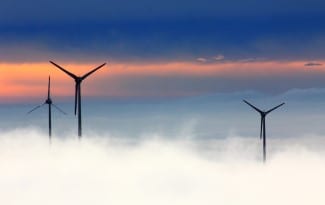NRCan Clean Growth Program: Clean Technology Fund for Business

Canada’s natural resources sector is one of the country’s top economic drivers. As of 2016, natural resources accounted for 16% of Canada’s gross domestic product (GDP), contributed over $200 billion in exports, and provided 1.74 million jobs for Canadians. While the competitiveness of Canadian players in this industry is highly important, so is their sustainability. This is one of the reasons why development and implementation of innovative clean technologies (cleantech) is so important.
To support a sustainable and environmentally-conscious natural resources sector, Natural Resources Canada (NRCan) offers the Clean Growth Program (CGP), a government funding program aimed at supporting the advancement of pre-commercial clean technologies. Through the program, cleantech developers can leverage Canadian government funding for research, development, and demonstration projects.
The Clean Growth Program provides up to 50-75% of eligible project costs to a maximum $5 million to $10 million in clean technology funding.
There is a two-phase process required for all applicants who wish to receive NRCan funding through the Clean Growth Program. The first phase requires the submission of a Letter of Interest (LOI); the second requires a full project proposal (FPP) which is more in-depth. Phase 1 applications must be submitted no later than February 28, 2018 to be considered for funding.
What is the NRCan Clean Growth Program?
The NRCan Clean Growth Program (CGP) is a pre-commercialization research, development and demonstration fund aimed at advancing innovative energy, mining, and forestry clean technologies. ‘Technologies’ is a broadly used term for the purposes of this program, and refers to any product, process, or service designed to remediate or prevent any type of environmental damage.
Through the Clean Growth Program, clean technology developers may access up to 50-75% of eligible project costs to a maximum $5-10M in Canadian government funding.
The program maintains two streams of funding support, including:
- Research and Development (R&D) Projects: Up to 75% of eligible project expenses to a maximum $5 million in grant funding. Must have a minimum ask of $300k and a minimum budget of $400k.
- Demonstration Projects and Front-End Engineering Design (FEED) Studies: Up to 50% of eligible project expenses to a maximum $10 million in funding, awarded as a grant (for FEED studies) or conditionally repayable loans (normally within five years after project completion for demonstration projects). Must have a minimum ask of $500k and a minimum budget of $1M.
CGP Program Focus Areas
The Clean Growth Program seeks to reduce environmental impacts in the natural resources industry through five focus areas:
- Reducing Greenhouse Gas (GHG) and Air Emissions
- Minimizing Landscape Disturbances and Improving Waste Management
- Production and Use of Advanced Materials/Bioproducts
- Energy Efficiency and Productivity
- Reducing Water Use and Aquatic Ecosystem Impacts
Applicants Eligible to Receive NRCan Funding
To qualify for the NRCan Clean Growth Program, applicants must be a legal entity validly incorporated or registered in Canada, including:
- For-Profit and Non-Profit Organizations;
- Indigenous Organizations;
- Federal Research Centres;
- Community Groups; and
- Canadian Post-Secondary Institutions.
Projects Eligible for the NRCan Clean Growth Program
Since NRCan’s Clean Growth Program focuses on advancing pre-commercial technologies, all innovations considered for funding must have a technology readiness level (TRL) of 3 to 9. Furthermore, projects should be related to at least one of the five program focus areas. Some examples of eligible projects include (but are not limited to):
[eva_sh_column add_item=”Add Column” element_custom_class=””][eva_sh_column_item column_size=”1 / 2″]
- Carbon capture, utilization & storage;
- Cost-effective electrical storage;
- Battery-powered or alternative-fuel vehicles;
- Low-emitting and bio-based electricity production;
- Conversion of waste streams to produce fuel;
- High-efficiency waste treatment;
- High-strength and crack-resistant materials;
[/eva_sh_column_item][eva_sh_column_item column_size=”1 / 2″]
- Advanced thermal or electrical conductivity;
- Introduction of advanced automation techniques;
- Reducing energy intensity of industrial equipment;
- Efficient mineral development processes;
- Data and logistic systems to reduce water consumption;
- Reuse, recycling and pollutant separation; and
- High-efficient and sustainable effluent treatment.
[/eva_sh_column_item][/eva_sh_column]
Provincial and Territorial Co-Funding for Projects
Another critical component of this program’s eligibility is the requirement to receive either provincial or territorial co-funding. Co-funding consists of financial or in-kind support from provinces and/or territories. Financial support could include government grants and loans, or other financial commitments.
Alternately, in-kind support relates to non-cash contributions toward the project, such as the offering of goods and services. Examples of in-kind support could include:
- Access to proprietary databases, software, or intellectual property;
- Technical expertise;
- Loan or donation of equipment and materials; and
- Use of facilities and assets.
How to Apply for Clean Growth Program CleanTech Funding
The application process for NRCan’s Clean Growth Program consists of two stages, including a Letter of Interest (LOI), and a Full Project Proposal. Only highly-attractive projects will be called forward from the first application phase to submit a full application. Applicants do not need to secure provincial or territorial funding at the time of LOI submission, but will need to have a commitment secured prior to the submission of a Full Project Proposal.
Letters of Interest for the Clean Growth Program are due February 28, 2018.
How Applications are Assessed
The Clean Growth Program was developed to help Canada reduce greenhouse gas emissions and create a more sustainable natural resources industry. Therefore, some of the main metrics used to assess applications are estimates for the technology’s ability to reduce GHGs, including direct and indirect:
- Canadian GHG reductions by project completion;
- Canadian GHG reduction forecasts (estimated annual reductions), at five years following the project completion, in 2030, and in 2050; and
- International GHG reduction forecasts at five years following the project completion, in 2030, and in 2050.
Mentor Works can determine whether your organization is a good fit for the Clean Growth Program. Please contact us if you have any questions.

